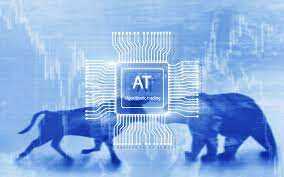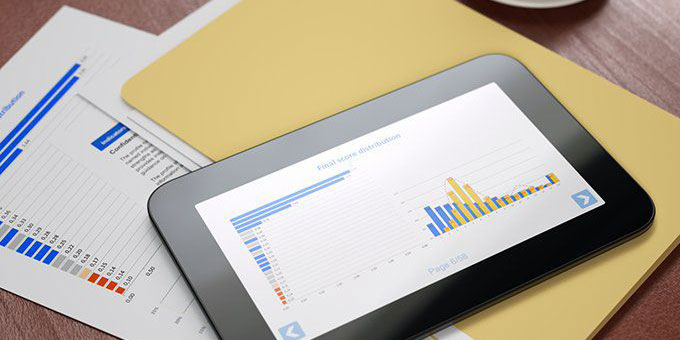All About Basics of Algorithmic Trading: Concepts and Examples
Jan 25, 2024 By Triston Martin
Introduction
Algorithms (Algos) are put into place when something needs to be done. Algorithms automate the trading process, allowing traders to generate profits at a rate that would be impossible for a human trader to achieve. Algorithmic trading is a technique that uses rules derived from mathematical models of price, quantity, time, and other factors. Algorithmic trading also takes the form of automated trading and black-box trading.
Interaction between humans is still possible even in a completely automated trading environment. With the advent of automated trading, human engagement has migrated from the trading process to creating cutting-edge alpha-seeking techniques. Since only people with advanced degrees in the physical or mathematical sciences or engineering could create the complicated quant models needed for trading, previously, only those with such degrees could work at algorithmic trading firms.

Examples Of Simple Trading Algorithms
Short 20 lots if the GBP/USD exchange rate rises above 1.2012. If the value of GBP/USD rises by 5 pips, you should cover the short by 2 lots. Each drop of five pips in the GBP/USD rate justifies adding one lot to the short position. If Apple stock drops below $200, it would be a good time to acquire 100,000 shares. You should acquire 1,000 shares if the stock price rises above $200 by 0.1%. As soon as the stock price dips below $200 by 0.1%, you should unload 1,000 shares.
Example Of A Moving Average Trading Algorithm
The program will buy Apple (AAPL) stock if the price is below the 20-day moving average in the market. The program will sell Apple stock if the current price exceeds the 20-day moving average. A green arrow indicates when the algorithm would have made a purchase, and a red arrow indicates when it would have made a sale.
Strategies For Algorithmic Trading
By anticipating trades that will occur as a result of changes in the number of stocks in the index fund, algorithmic traders can profit from the "rebalancing." Computers execute the trades automatically, guaranteeing low costs and quick profits.
Algos And Arbitrage
Profiting from the momentary, typically insignificant, discrepancies in the market price of a security traded on two distinct exchanges is known as arbitrage in the financial markets. A risk-free arbitrage opportunity arises when a stock is traded at a discount in one market and a premium in another.
Time Weighted Average Price (Twap)
This strategy can gradually introduce more of the order into the market between the set start and stop times by breaking down a large order into several smaller ones. The order is placed towards the midpoint between the start and end times of the trade to minimize the effect the approach has on the market.
Do All Categories Of Investors Use Algorithmic Trading?"
Many different types of investors use algo-trading strategies. Institutional investors such as mutual and pension funds utilize algo-trading to make large-scale stock purchases. They can make transactions without influencing the price of the stock. Algo-trading is beneficial to sell-side participants like brokerages since it improves liquidity. Automated trading firms, such as hedge funds, frequently adopt polar opposite stances in trades. Trading algorithms are a more efficient method in these settings. As algorithmic trading has become more prevalent, the role of intuition and other non-systematic components has decreased.
Frequencies In Trading

High-Frequency Trading (HFT)
These are instantaneous, algorithm-based processes that are executed automatically. Automated trading strategies make millions of deals daily, each held for a short time and profit margins set very low.
Benefits of Algorithmic Trading
Every transaction is finalized at the best possible cost. Effective and rapid market order entrance (there is a high chance of execution at the desired levels). Instantaneous and carefully timed transactions eliminate wild fluctuations in the market's value.
The transaction costs have been lowered. Market conditions can be tracked automatically in real-time. Traders can feel more at ease when placing orders. Backtesting can reveal the efficacy of a certain algorithmic trading method by comparing hypothetical market performance over time with actual market performance. Emotional and psychological biases are reduced, allowing traders to make more rational choices.
Self-Learning About Algorithmic Trading Online
You can find mathematicians and computer scientists who are glad to share their knowledge and ideas during study via online learning portals like QuantInsti, Coursera, Udemy, Udacity, edX, and Open Intro.
Conclusion:
When combined with financial markets, algorithms allow for algorithmic trading, which has become increasingly popular in recent years. With automated or algorithmic trading, orders are executed more quickly, trading expenses are reduced, and human error is eliminated. Common trading strategies include trend-following, arbitrage, and rebalancing index funds. Algorithmic trading uses volume-weighted average pricing (VWAP) and time (time-weighted average price). Algorithmic trading requires access to a computer and network, knowledge of financial markets, understanding and writing code, and trading experience.

NatWest’s Investment in Tech Innovation
Market Expectations as Strategists Monitor the BOJ’s Moves and Governor Ueda’s Potential Influence

Timing Your Tax-Loss Harvesting: A Guide to Smart Investing

Securing Contractor Insurance: A Step-by-Step Procurement Guide

Why There Is No Dell Stock

Deciding Between Savings Accounts and Bonds: What You Need to Know

Why Would a Stock Have No Par Value? What to Consider

All About Basics of Algorithmic Trading: Concepts and Examples

Constant Proportion Debt Obligation (CPDO): What It Is and Why It Has Risks

